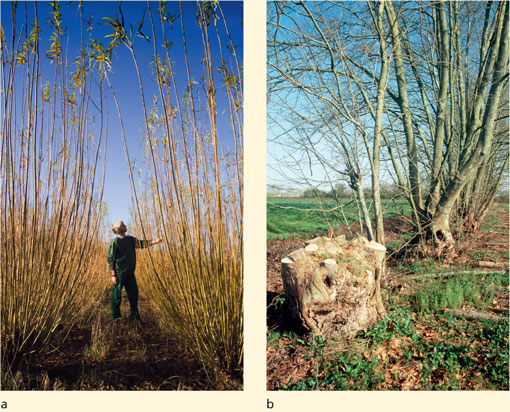3 Wood as an energy source
The use of wood as fuel for cooking and heating has a long history. In developing countries, 50-90% of fuel used for such purposes comes from either wood or other plant biomass. However, wood is increasingly providing a fuel for electricity generation. The burning of wood is considered to be carbon neutral as it does not release more CO2 into the atmosphere than if the wood were to decompose naturally, although this CO2 is released in a very short space of time.
Woodlands can be managed sustainably to allow appropriate harvesting and replanting; this also provides some local employment and creates a pleasant and enjoyable place to visit. Woodlands also perform a useful function by temporarily storing rainwater, thereby preventing excessive water from entering streams and rivers too quickly. Wood burning also provides an outlet for wood residues from forestry activities which would otherwise end up in landfill sites. There is concern, however, that there will not be enough material to sustain increasing demand for woodfuels.
The process of producing heat and electricity from woodfuel is complex. First, the wood has to be dried, then it undergoes pyrolysis (heating in the absence of oxygen) to produce gases. The gases are then purified and burnt to generate electricity. The ash created during pyrolysis contains nutrients which potentially could provide a plant fertiliser, though it is possible the ash may contain contaminants from the soils in which the trees had originally been growing.
Potential sources of woodfuel are many and include early thinnings from commercial plantations, the residues from timber harvesting and arboricultural activities, coppicing and sawmills. In addition, wood pellets made from highly compressed waste sawdust are gaining in popularity as domestic fuels in the USA and various Scandinavian countries.
Some wood harvesting systems use the whole tree for chipping, while others utilise only the stem wood. In 'short rotation forestry', fast-growing trees are cultivated and grown until they reach what is considered an economically optimum size; the time this takes varies depending on the tree species. The trees are then either harvested or coppiced. Harvesting involves completely cutting down the trees, possibly removing the roots, and then replanting with saplings. In coppicing, the young stems are cut back to encourage a number of new stems to grow from the 'coppice stool'. This can help increase levels of carbon dioxide uptake (carbon sequestration) as the coppice stool re-grows.
Box 4 Short rotation coppice: willow and poplar
Willow (Salix species) and poplar (Populus species) are fast-growing trees, and because they can be densely planted, they give a high yield of wood in a relatively small area. Stems can be coppiced every three to five years and the coppice stools remain productive (produce new stems) for up to 30 years before the root stocks need to be replenished. There is much research interest in short rotation coppicing and the collaborative 'Biomass for Energy Genetic Improvement Network (BEGIN)' have undertaken a number of trials to find varieties and cultivars of willow and poplar species that offer high stem yields, increased growth rates, increased pest and disease resistance and high energy output when burnt.
Establishing willow or poplar plantations has other benefits, such as creating a method of diversification for agricultural land use, increasing biodiversity and providing shelter or screens both for wildlife and against pollution. Willow, in particular, is very good at taking pollutants, including excess nitrate from fertilisers, out of the soil (a process known as phyto-remediation) but this can lead to a high risk of contaminants in the wood.

The reason why coppicing works is explained in Box 5.
Box 5 Coppicing
The growth of plants is regulated by various chemical compounds that the plant produces naturally. One such group of compounds are the auxins (plant growth regulators, sometimes called plant hormones). You may have come across 'auxins' as they form the active ingredient in hormone rooting powders that gardeners use to speed up the rate of root production when they have taken cuttings. Auxins are normally produced in the very tip of the shoot and one of their main effects is to prevent side shoots from growing so that all the growth effort of the plant is focused in one main shoot. If the main shoot is damaged or cut off, the source of auxin production is removed so side shoots will then grow. This is exactly what happens when a tree is coppiced, the main shoot (the trunk) is cut off and side shoots (new branches) form. The coppiced stems tend to grow long and straight, mainly because coppiced trees are planted in dense groups or stands (see Figure 8a), and the coppiced side shoots will grow straight up to try and reach the light.
Question 16
If you were planting a species of tree for use as coppice, what characteristics would you be looking for in the tree species you use?
Answer
You would want the trees to be fast growing, capable of growing well when planted closely together and to require little in the way of fertiliser application (which would keep costs down).
